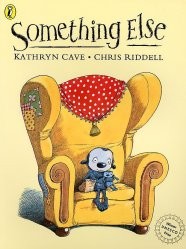Learn to make bread. (1 hour)
Have a go at learning to make bread (from scratch). You will find recipes online.
Evidence: Include a copy of your recipe and take a photo of the finished product (2 hour).
So the two K’s decided to try and make some bread…easy right? hmm, kind of!
We chose a recipe and bought in the ingredients we didn’t already have in our cupboards! Much to Kirsty’s surprise, the Co-op sell 7g sachet fast-action dried yeast! And there we had it, all set to go…
We followed each instruction step by step and eventually it started to come together; we did need a little more flour when mixing. Next came the cooking part…we thought ‘oh bread in an hour fab, we’ll choose this recipe’, only to find out it actually doesn’t take an hour as you need to let it rise for an hour after prepping and before cooking!! Oops, maybe should’ve read past the first instruction after all!
Another slight problem…we didn’t have a bread tin to cook it in so we improvised and used a round baking tin, after all we are students! So we let it sit for an hour then heated up the oven and popped it in.
During the time between prep & cooking we decided to make some lentil soup to go along with our bread; mum’s recipe obviously 😉 I’ve made it a few times however Kirsty was new to the soup making process. Chopped the onions, cooked the pancetta and threw in the rest of the ingredients then left it to cook away nicely. Now all we had to do was wait…
Sadly the bread wasn’t quite cooked enough to have with our soup before we ventured out the house to a meeting so we left it in the hands of my flatmate to turn the oven off after a short period of time (she remembered woo!). I then had some of the bread alongside the rest of the soup for my tea, a standard student dinner in 4th year!
I have created two short flipagram clips which show the process of both the bread & soup making – there are some pictures missing as we forgot to take some (eg. bread covered to rise) & we also used olive oil instead of sunflower oil which is pictured at the start of bread video.
A link to the bread recipe we used –
http://www.bbcgoodfood.com/recipes/10121/bread-in-four-easy-steps
Also a link to Delia’s video which helped us in our confused state halfway through –
Lentil Soup Recipe –
What you need:
1 onion; pancetta/bacon(cut up); red split lentils(half a cup, washed); hot water; butter; veg & chicken stock cubes; salt/pepper
How to do it:
- chop onion finely
- put butter in pan to melt on low heat
- put in pancetta & onions to cook
- boil kettle
- add stock cubes when bacon nearly cooked
- add washed lentils & boiled water (3/4 of kettle)
- bring to boil then simmer
- add salt & pepper for flavour if wish
- simmer for about an hour
- liquidise if wish





















 The important message which came from this workshop was that it is vital to deal with whatever is bothering the children (ourselves) in order to ensure that minor worries do not snowball into bigger issues which are more difficult to deal with. Ensuring that we are talking and communicating with children and young people is key to providing opportunities for them to share their thoughts/concerns with those who can offer support and guidance.
The important message which came from this workshop was that it is vital to deal with whatever is bothering the children (ourselves) in order to ensure that minor worries do not snowball into bigger issues which are more difficult to deal with. Ensuring that we are talking and communicating with children and young people is key to providing opportunities for them to share their thoughts/concerns with those who can offer support and guidance.




